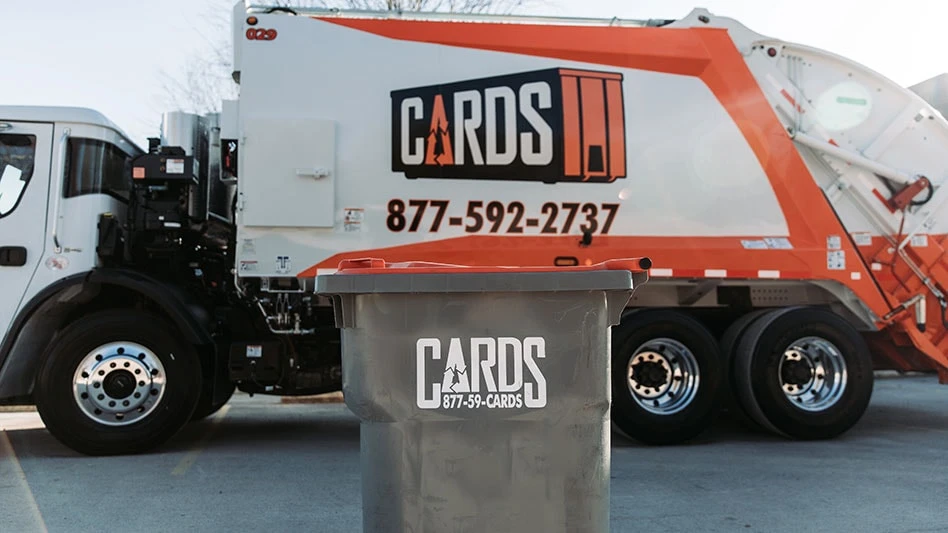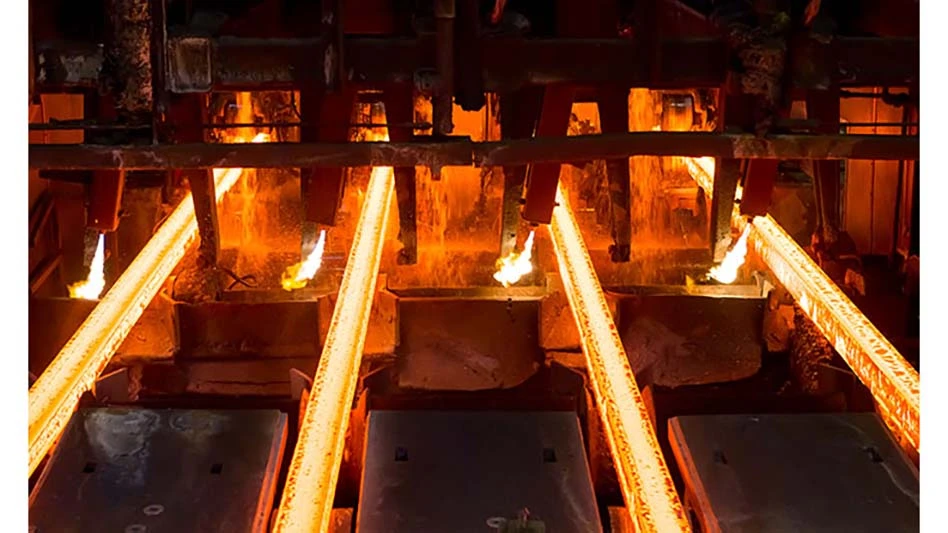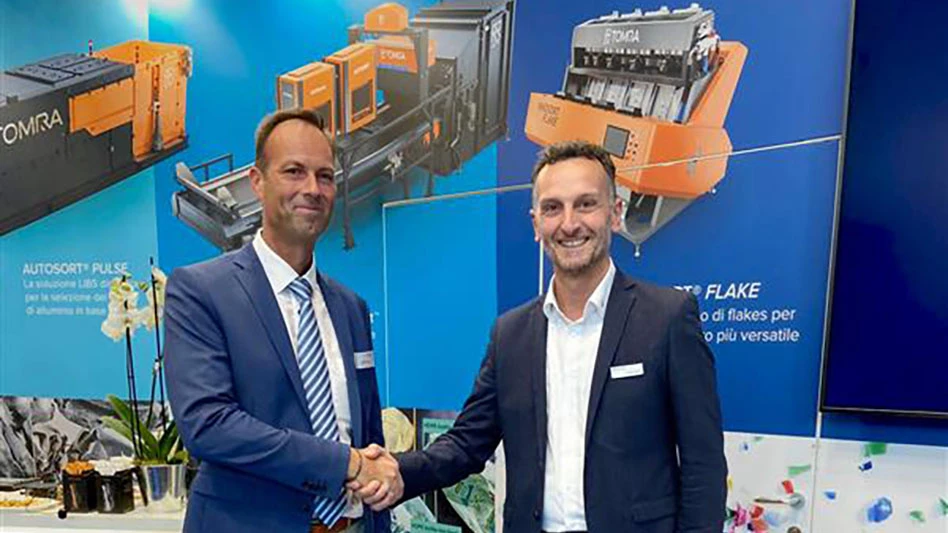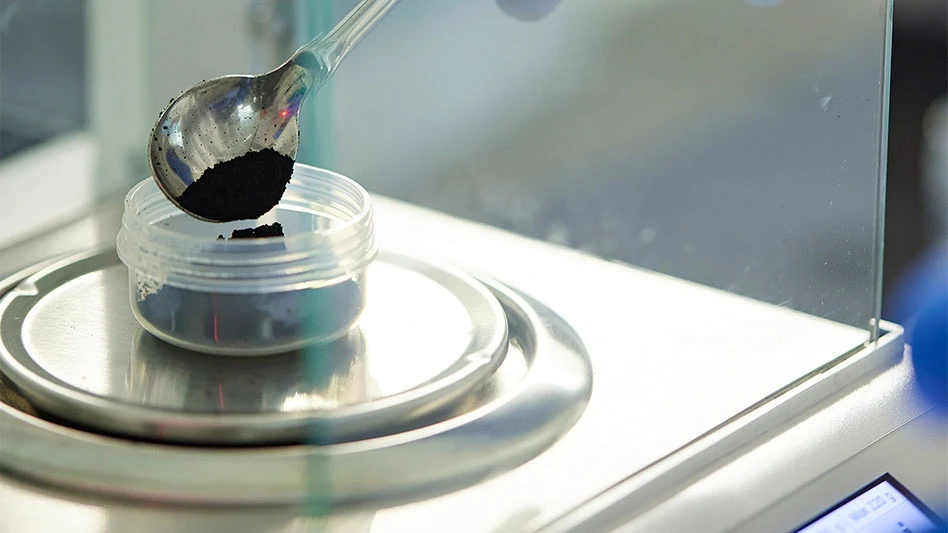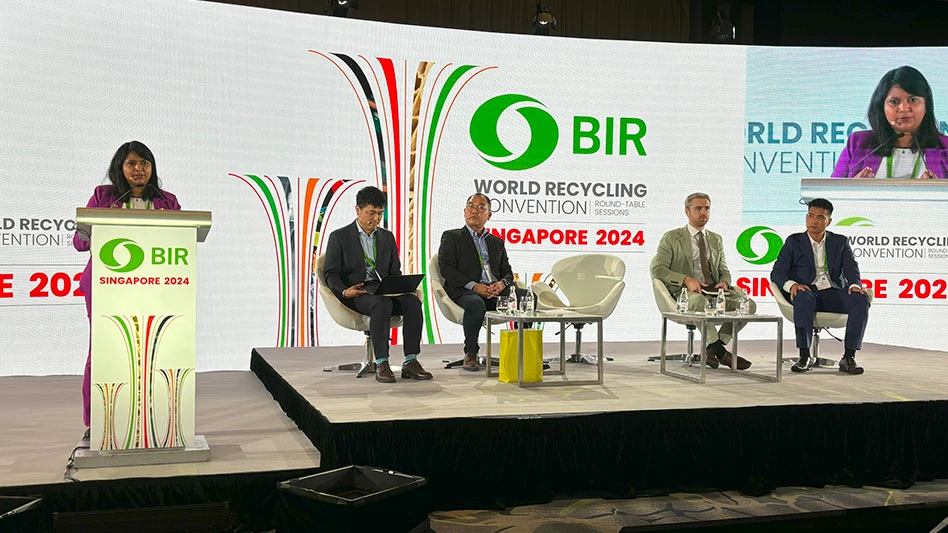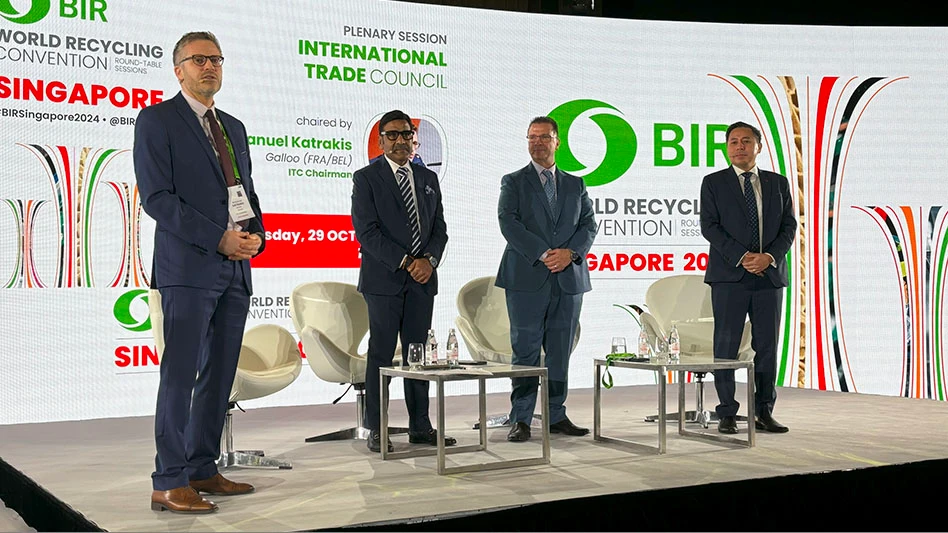
Mark Janzen Photography.
Samsung Electronics, Seoul, South Korea, was recently recognized by the U.S. Environmental Protection Agency (EPA), Washington, for its sustainably designed products and processes, as well as diverting electronics from landfill. In December, the company won the Gold Tier award in the EPA’s Sustainable Materials Management Electronics Challenge for diverting nearly 276,000 tons of electronics from landfills to e-Stewards certified recyclers.
Recycling Today talked with Mark Newton, director of corporate environmental affairs at Samsung, about how one of the world’s largest electronics producers recycles more than 100 million pounds of end-of-life electronics per year and what the company is doing to recycle and reuse more material.
Recycling Today (RT): Samsung has been recognized for its sustainably designed products and processes, as well as diverting electronics from landfills. What are the sustainable designs, trends and processes that drive the company today?
Mark Newton (MN): Samsung works diligently to ensure its customers have access to

environmentally sustainable products and this effort has been recognized through attaining Electronic Product Environmental Assessment Tool (EPEAT) certifications. In addition, Samsung focuses and promotes its work on sustainable products by concentrating on the reduction of hazardous substances, increase of recycled content and improvements in energy efficiency. We believe that a holistically designed product can be good for consumers and the environment at all points of its life cycle.
We perform life cycle assessments (LCA) to identify the potential environmental impact of our products throughout their life cycle. We then design our products through a process that considers the eco-impact of our products in each stage starting from the development and manufacturing phase all the way through use, takeback and recovery.

RT: When did Samsung’s e-scrap collection, recycling and reuse initiatives begin and how have they expanded since then?
MN: Starting from the early 2000s, Samsung has collected e-scrap from consumers. As extended producer responsibility laws have been introduced at the state level, the quantity and scope of e-scrap collection has expanded. Samsung typically contracts with third-party recyclers that have attained the e-Stewards certification for responsible reuse and recycling. This standard ensures that all e-scrap is handled properly and is not exported to the developing world. Depending on the product received from the consumer, its condition and the intended end market, the recycling process involves a variety of different actions, such as refurbishment, dismantling or shredding.
As part of our closed-loop program, we are using recycled plastics on a broad array of products, including televisions, monitors and mobile phone chargers. We are also contributing to the reduction in the use of virgin natural resources and related negative environmental impact by using postconsumer material, which is renewed material from disposed water bottles and consumer plastics. In 2017, we used 35.3 thousand tons of postconsumer material, which represents 6.1 percent of our total plastic consumption.
RT: As one of the world’s largest electronics producers, what is Samsung’s role to ensure electronics are properly managed and recycled?
MN: Samsung promotes responsible recycling of old, unwanted or nonworking electronic products throughout the U.S. Its goal is to make recycling as easy as product purchases by supporting the collection and recycling of e-scrap through permanent, event and takeback collection efforts.
This philosophy is also carried through to our ongoing commitment to reduce e-scrap by extending usability through our extensive customer care service and authorized repair network. Then, at the end of a product’s life, we are an industry leader in supporting responsible collection and e-scrap recycling practices. To put it simply, our goal is to make recycling of old, unwanted or nonworking electronics as easy as product purchases. We do this by supporting 500 drop-off locations and recycling events for e-scrap across the U.S. and continue to work with our recycling partners to expand the collection network.
RT: Through Samsung’s efforts, how many electronics and other materials have been diverted from landfill and recycled? What are some of Samsung’s other sustainability efforts?
MN: Sustainability is an organizing principle for our company, from our plans to source renewable energy for 100 percent of our factories, office buildings and operational facilities in the U.S., China and Europe by 2020 to responsible recycling of more than 100 million pounds of e-scrap every year in the U.S. alone.
By the end of 2019, Samsung, with its certified partners, will have collected more than 1 billion pounds of e-scrap in the U.S. and 7 billion pounds globally since 2008. By 2020, 100 percent of the paper used in our packaging and product manuals will be sustainably sourced from third-party certified providers to promote the responsible management of the world’s forests. These are just a few of the ways in which we continuously incorporate an environmentally conscious approach at all points of a product’s life cycle.
RT: What are Samsung’s future sustainability goals and how will the company achieve them?
MN: We endeavor to move towards a circular economy in which we create a virtuous cycle of longevity, repair, reuse and recycling. Through our efforts, we hope to reduce our environmental footprint while reducing costs. In order to follow circular economy principles, we have established the following five strategic focus areas:
- expanding use and purchase of recycled materials at product design stage while minimizing use of raw materials
- working towards maximizing product life span by designing products based on end customer needs and rigorous quality testing
- reducing the use of virgin natural resources and raw materials by maximizing reuse of scrap materials from manufacturing stage
- minimizing use of raw materials and maximizing transportation efficiency by creating compact product designs and packaging
- extending the product life span and increasing customer satisfaction through a professional repair service network
Latest from Recycling Today
- Algoma Steel Group revenue declines in its fiscal Q2, posts consolidated loss
- Avantium’s Releaf product enters cosmetics industry
- CMC plans to appeal restraint of trade ruling
- ARA names new executive director
- Cronimet adds to alloys capacity in Brazil
- GFL reports highest adjusted EBITDA margin to date
- Dow, Ambipar working to drive plastic recycling in Brazil
- SABIC recycled PP used in food vacuum system containers
